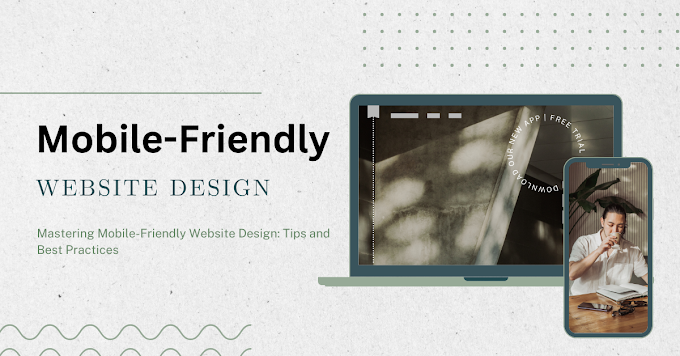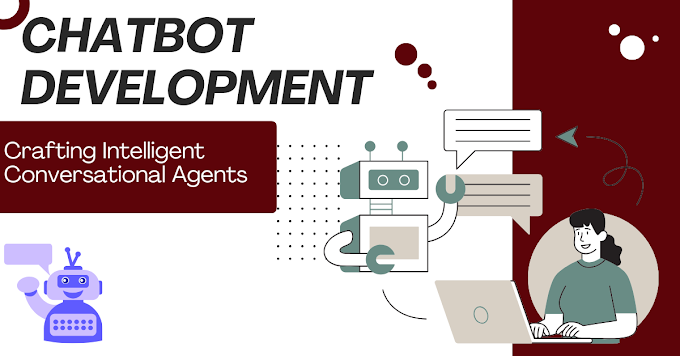A Comprehensive Guide to Chatbot Development: Crafting Intelligent Conversational Agents
In an era dominated with the aid of virtual interactions, chatbots have emerged as crucial equipment for agencies looking to decorate client engagement, streamline verbal exchange, and offer on the spot aid. This complete guide will take you via the key steps and issues in developing a chatbot, from conceptualization to deployment.
Understanding Chatbots: A Brief Overview
Chatbots, or conversational sellers, are AI-driven programs designed to simulate natural conversations with customers. They may be incorporated into diverse structures, together with websites, messaging apps, and social media, providing corporations with a flexible way of interacting with their audience.
1. Defining Your Objectives
Before diving into the technical aspects of chatbot development, it is crucial to define the cause and goals of your chatbot. Whether it's customer support, lead generation, or presenting information, a clean information of your dreams will manual the complete development process.
2. Choosing the Right Platform
Selecting the appropriate platform on your chatbot is a foundational selection. Consider wherein your audience is most lively. Popular platforms encompass:
Website Chatbots: Directly embedded on your internet site for real-time interactions.
Messaging Apps: Leveraging structures like Facebook Messenger, WhatsApp, or Slack.
Voice Assistants: Developing voice-enabled chatbots for devices like Amazon Alexa or Google Assistant.
3. Designing Natural Interactions
Creating a effective consumer experience hinges on designing natural and intuitive interactions. Here are key issues:
Conversational Flow: Map out the communicate flow, anticipating person queries and presenting applicable responses.
Personality: Infuse a hint of personality that aligns together with your brand, whether or not it's formal, pleasant, or quirky.
Multilingual Support: Consider the language preferences of your audience.
Four. Integrating AI and NLP
Artificial Intelligence (AI) and Natural Language Processing (NLP) are pivotal for permitting chatbots to understand and respond to consumer inputs correctly.
Machine Learning Models: Train your chatbot the usage of device mastering models to improve its know-how of person intent.
NLP Libraries: Utilize NLP libraries like NLTK or spaCy for language understanding and sentiment analysis.
5. Choosing Development Tools and Frameworks
Selecting the right improvement gear and frameworks can appreciably streamline the chatbot development technique.
Frameworks: Explore famous frameworks like Microsoft Bot Framework, Dialogflow, or Rasa for constructing chatbots.
Coding vs. No-Code/Low-Code Platforms: Choose a development approach based totally in your group's understanding and challenge necessities.
6. Testing and Optimization
Thorough testing is crucial to ensure your chatbot performs seamlessly. Consider the following components:
User Testing: Engage real customers to check the chatbot's capability and gather comments.
Performance Optimization: Continuously optimize your chatbot based totally on user interactions and evolving requirements.
7. Deployment and Integration
Once your chatbot is developed and tested, it's time to installation it to your selected systems.
Platform-Specific Integrations: Ensure seamless integration with websites, messaging apps, or voice-enabled devices.
Monitoring and Maintenance: Implement tracking equipment to song overall performance and cope with any troubles promptly.
8. Future-Proofing Your Chatbot
The subject of chatbot development is dynamic, with advancements usually shaping the landscape. Stay informed approximately rising technology and tendencies to future-evidence your chatbot.
Voice Recognition: Explore voice-enabled functions to decorate person engagement.
AI Advancements: Keep an eye on evolving AI competencies for more sophisticated chatbot interactions.
Conclusion: Building Intelligent Conversational Agents
Developing a chatbot is a dynamic and iterative manner that requires a mix of technical know-how and a deep knowledge of person needs. By following this complete guide, you could embark on a a success chatbot development adventure, growing a effective tool that now not only meets but exceeds consumer expectations, riding stronger engagement and purchaser pride.
FAQ
1. What is the purpose of growing a chatbot?
The number one reason of developing a chatbot is to create an automatic conversational agent that can have interaction with users in a natural language format. Chatbots are used to beautify customer support, streamline enterprise methods, offer records, and interact users on numerous virtual structures.
2. How are chatbots skilled to recognize and reply to person queries?
Chatbots are trained the usage of natural language processing (NLP) and device gaining knowledge of algorithms. They are fed with datasets containing examples of consumer queries and suitable responses. Through training, the chatbot learns to recognize patterns, understand context, and generate relevant and coherent responses to a whole lot of person inputs.
3. What are the important thing considerations for designing a a success chatbot?
Designing a successful chatbot entails thinking about user enjoy, defining clean objectives, choosing the right platform, implementing a herbal language know-how (NLU) system, and constantly refining the bot primarily based on user feedback. Ensuring that the chatbot aligns with user expectancies and affords fee is essential for its achievement.
4. How can builders deal with ethical concerns in chatbot development?
Developers can address moral concerns in chatbot improvement by making sure transparency approximately the bot's competencies, averting biased schooling facts, respecting user privacy, and incorporating mechanisms for person consent and manipulate. Regular monitoring and updates are critical to address rising ethical demanding situations in chatbot interactions.
5. What programming languages are usually used for chatbot development?
Commonly used programming languages for chatbot development include Python, JavaScript, and Java. Additionally, frameworks and libraries together with TensorFlow, PyTorch, and Microsoft Bot Framework are often employed to streamline the improvement method. The desire of programming language relies upon on elements just like the developer's information, the supposed platform, and the particular necessities of the chatbot.








